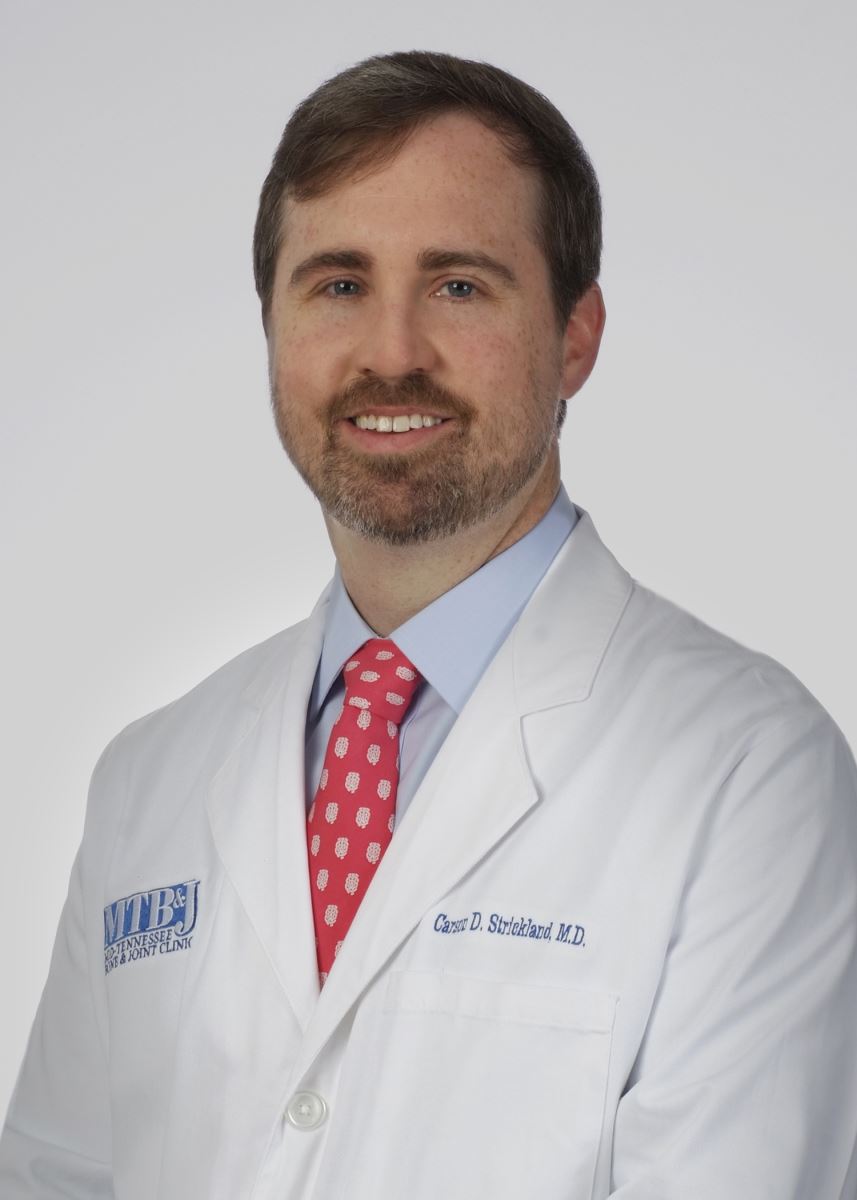Every time you walk, point your foot, stand on your toes or jump, you use your Achilles tendon. It is the largest tendon in your body, connecting your heel bone to your calf muscle along the back of your ankle.
Although you may be familiar with Achilles tendon injuries because you’ve heard of famous athletes experiencing them, anyone can injure this tendon. You don’t need to be an athlete for it to happen.
“I most commonly see injuries to the Achilles tendon in the active, ‘weekend warrior’ type people. They usually happen in those with very tight calf muscles and limited dorsiflexion at the ankle, as well as those who have pre-existing disease from years of wear and tear,” said Carson D. Strickland, MD, an orthopedic surgeon associated with Tennessee Orthopaedic Alliance Columbia.
Injuries to this tendon may occur from overuse or damage due to a sudden movement or trauma to the area. The tendon may become irritated, inflamed or swollen. It may also partially or fully tear or rupture. Achilles tendon injuries may cause a lot of pain and can also compromise the range of motion in your foot and leg.
You may experience one or more of the following symptoms if you injure your Achilles tendon:
- Pain down the back of your lower leg near the heel that gets worse with activity
- Swelling along with pain during or after activity
- Thickening of the Achilles tendon
- Difficulty flexing the foot or bending it downward
- A sudden sharp pain, sometimes accompanied by a popping sound (this may indicate the tendon has ruptured)
“How we treat these injuries depends on a multitude of factors, including anatomic location of the injury, age, level of activity and how soon the injury is diagnosed,” Dr. Strickland said. “Sometimes, you can tear a muscle fiber of one of the muscles that eventually form the Achilles, and this is called a gastrocnemius strain. This can typically be treated with conservative management in the form of rest, ice, physical therapy and anti-inflammatory medication. A walking boot may also provide some symptomatic relief. If a full-thickness tear is diagnosed acutely, there is good research to support immobilization and functional rehabilitation, however, most young, active people elect to have it surgically repaired to decrease the rate of re-rupture and ensure that it heals with appropriate tension to prevent weakness. Regardless, the recovery tends to be roughly the same and is one that typically takes nine-12 months to fully recover from.”
Although there is no way to guarantee that you’ll never injure your Achilles tendon, there are steps you can take to lower your risk, including:
- Warming up properly before any type of physical activity, exercise or sports
- Slowly increasing the intensity level of activity
- Engaging in low-impact activities, such as bicycling or swimming, rather than high-impact activities like running, basketball or tennis
- Alternating activities so you don’t put repetitive stress on the tendon day after day
- Wearing activity-appropriate supportive shoes
- Avoiding exercise on uneven, slippery or hard surfaces
- Stopping activities if you begin to experience pain, swelling or discomfort of the tendon
If you notice symptoms of a possible Achilles tendon injury, make an appointment to see a doctor. If you experience sudden severe pain in the back of your leg near your heel, accompanied by a popping sound or the inability to flex or bend your foot or stand on your toes, seek medical attention right away, because it may be a sign of a ruptured tendon.

Carson D. Strickland, MD
Copyright 2024 © Baldwin Publishing, Inc. Health eCooks® is a registered trademark of Baldwin Publishing, Inc. Cook eKitchen™ is a designated trademark of Baldwin Publishing, Inc. Any duplication or distribution of the information contained herein without the express approval of Baldwin Publishing, Inc. is strictly prohibited.
Date Last Reviewed: February 14, 2024
Editorial Review: Andrea Cohen, Editorial Director, Baldwin Publishing, Inc. Contact Editor
No information provided by Baldwin Publishing, Inc. in any article is a substitute for medical advice or treatment for any medical condition. Baldwin Publishing, Inc. strongly suggests that you use this information in consultation with your doctor or other health professional. Use or viewing of any Baldwin Publishing, Inc. article signifies your understanding and agreement to the disclaimer and acceptance of these terms of use.